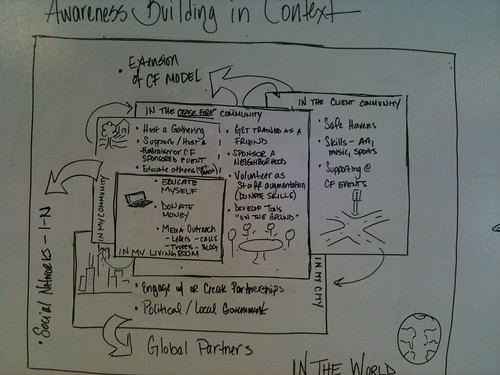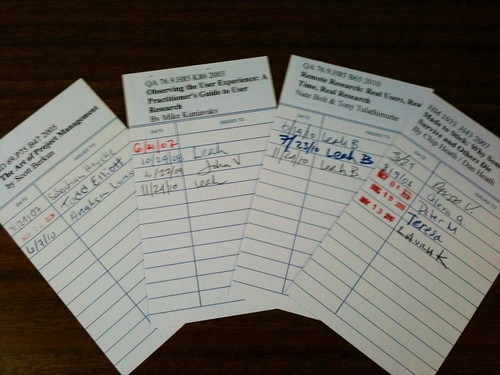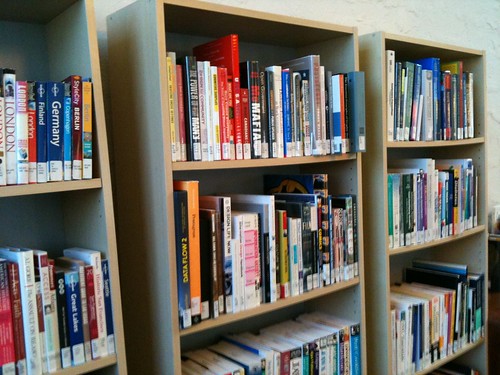*** Originally Posted on the Adaptive Path Blog ***
Awhile back I wrote a post about how to run a workshop, in the general sense. I thought that I would write out the steps for a concepting workshop in particular. Concepting workshops are ones that we do a lot at Adaptive Path. They are great for when you need to generate a lot of ideas around an issue in a short amount of time. They can be done with large or small groups, with designers, developers, and managers.
1. Create the agenda for the day. Determine what it is you will be sketching and what your goal is for the end of the session. For a full day workshop, say from 10-4, plan on 20 minutes of sketching, then 30-40 minutes to discuss what was created. You might have four sketching heats in a day, each focused on a different topic or nuance of the issue. Be sure to include a hour for lunch and a break in the morning and afternoon, as people do get tired.
2. Gather your materials. You are going to need lots of Sharpies or markers, drafting dots or tape to hang the sketches up, sticky notes, and the paper to draw on. Give participants options with different colors and sizes of markers and different color sticky notes.
3. Use a Sketch Sheet. I've found that having stacks of Sketch Sheets (PDF: 12 KB) work really well. They are a half-sheets of paper, so they aren't as intimidating as full sheets. They include room for the sketch as well as a description (in words) of what it does and what it's like. This is very helpful since sometimes it's hard to tell what is going on in a quick sketch. You can certainly use blank paper for sketching too. Just be sure to always have participants title their sketches. It helps to focus the sketch and remember it later.
4. Capture the discussion on the board with the stickies. After everyone sketches, have them paste their sketches up on the wall. As a group go through and talk about them. Capture the discussion on sticky notes as you talk. You'll want to include things like descriptions for how the sketch works and additional ideas or concerns that are raised in the discussion.
5. Review and refine after the workshop. Once the workshop is over, the real work for you begins. You'll want to review all of the sketches and refine or redraw the most promising. Duplicate ideas can be redrawn into a single representation. You might also want to work in ideas from the conversation to strengthen the sketch.
6. Create a concept book. Not all of the sketches you produce in the workshop will make it into your design. But you don't want to lose the good ideas that were generated. Document all the sketches that were created in a concept book. Scan in the sketches and then add annotations to explain what is happening. This provides a great resource that you can refer to later.







Recent Comments